
The Thai educational system has been grappling with a significant shortfall in budget allocation to address educational disparities. Currently, the educational budget heavily favors supply-side financing, allocating 80% to educational institutions and public agencies for personnel costs. In contrast, only a minimal 10% is directed towards demand-side financing for students, lacking targeted assistance for those in need. This results in generalized spending, prioritizing universal free education over support for economically disadvantaged children, who receive just 3,000 million Thai Baht annually, around 0.5-0.6% of the total budget. Consequently, many disadvantaged youth struggle to access continuous educational services, leading to higher dropout rates and perpetuating educational disparities that restrict opportunities for vulnerable groups.
To address this, the Independent Commission for Education Reform (ICER) proposes allocating at least 5% of the total budget, approximately 25,000 million Thai Baht annually, insisting that this allocation exclusively targets educational disparities and prioritizes demand-side financing, focusing on students’ needs. Operating within Thailand’s educational framework, the Equitable Education Fund (EEF) Thailand steps in to rectify these disparities through strategic resource management and prudent targeted spending. By redirecting budget allocations to bridge educational gaps, the EEF has been reshaping the educational landscape; advocating for a shift towards demand-side financing tailored to students, the EEF aims to maximize opportunities for children and drive educational reform. This transition necessitates innovative financing strategies and effective implementation to bring about substantial change in the educational system.
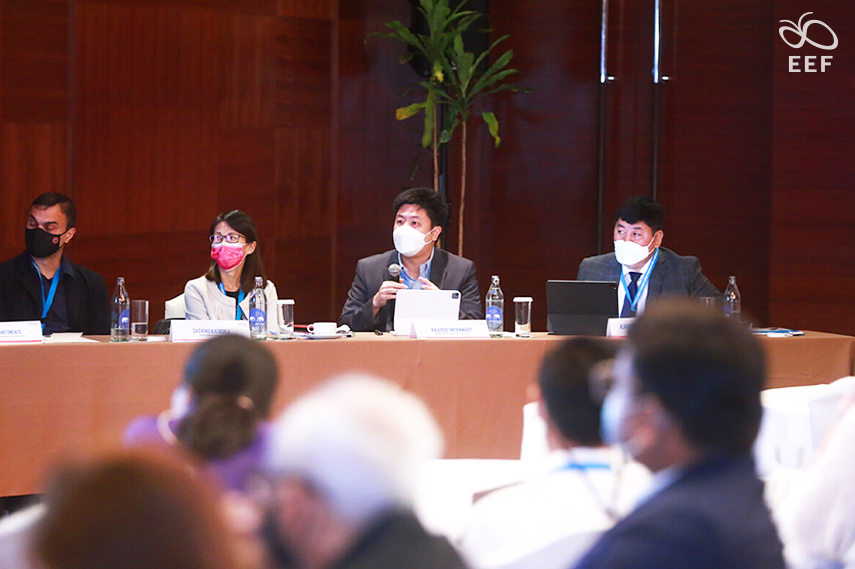
In the wake of evolving global policies, the EEF has embarked on a bold mission to tackle educational disparities head-on. Key among its challenges is the strategic allocation of limited resources to directly dismantle barriers hindering access to education. Instead of mere aid, the focus is on fostering opportunities and potential for as many children as possible, even amid financial constraints. Moreover, the EEF aims to drive systemic change by reforming educational paradigms and leveraging societal shifts without relying solely on financial injections.
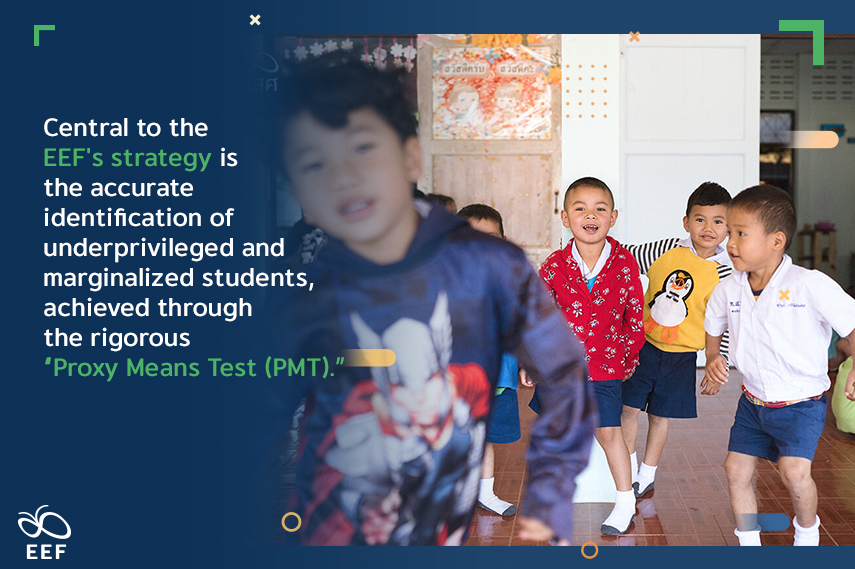
Central to the EEF’s strategy is the accurate identification of underprivileged and marginalized students, achieved through the rigorous “Proxy Means Test (PMT).” In the initial year, approximately 1.7 million students were identified as “poor,” with 500,000 classified as “extremely poor.” Leveraging digital technology, the EEF implemented a digital information system for efficient assistance management, facilitating monitoring and distribution while ensuring accountability. The “Conditional Cash Transfer (CCT)” system incentivized school attendance, aiming for an 80% attendance rate, with flexibility for unavoidable circumstances. Efforts focused on understanding reasons for non-compliance, aiming for reintegration rather than punitive measures, thus ensuring equitable support for underprivileged students.
Exploring research avenues with a systemic lens unveils a pivotal realm for Thailand: educational reform. Beyond surface issues like teacher shortages or funding gaps, lies a deeper need for a comprehensive overhaul of teaching methodologies. This demands empowering schools to adapt and evolve, shifting from traditional top-down policies towards a model rooted in robust academic foundations, experimentation, and ongoing learning. Collaboration between academics and stakeholders becomes paramount, ensuring research translates into effective implementation. Topics must address integrating 21st-century skills into curricula while emphasizing practical implementation and quality control. Tackling educational disparities requires dismantling socio-economic barriers while elevating standards, acknowledging societal divisions and economic risks, but remaining steadfast in the pursuit of universal education.
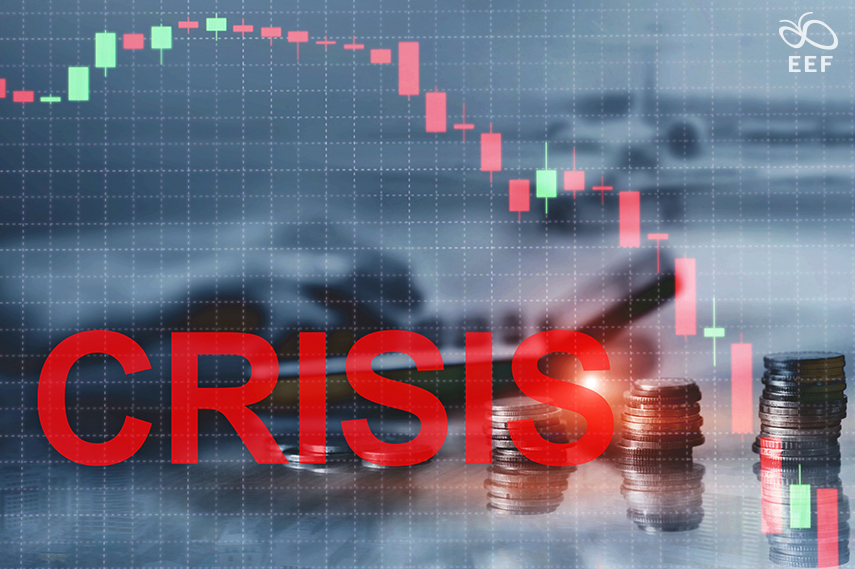
Over the past two decades, global policy landscapes have undergone significant transformations, rendering once-effective strategies obsolete. Reflecting back to around the year 2000, Thailand was experiencing economic prosperity and fervent reform efforts —there was optimism that Thailand would ascend to great heights, yet dreams were shattered by the 1997 Asian financial crisis. Today, the imperative is clear: advocating for a comprehensive “safety net” in education, ensuring not just access but also quality. It demands proactive engagement from various sectors to confront the challenges ahead. A pivotal force for change lies within the rural populace, encompassing children, youth, and families. Yet, Thai society stands divided along stark urban-rural lines, with the minority —the former— enjoying privileges while the majority — the latter —languishes.
For many, education feels futile, a mere pastime rather than a conduit for social mobility. Without aspirations for education to elevate social status or propel future generations forward, success remains elusive. Meanwhile, urbanites vie for coveted spots in prestigious educational institutions, wrongly attributing their achievements to innate talent rather than the quality of education received. Such misconceptions demand debunking.
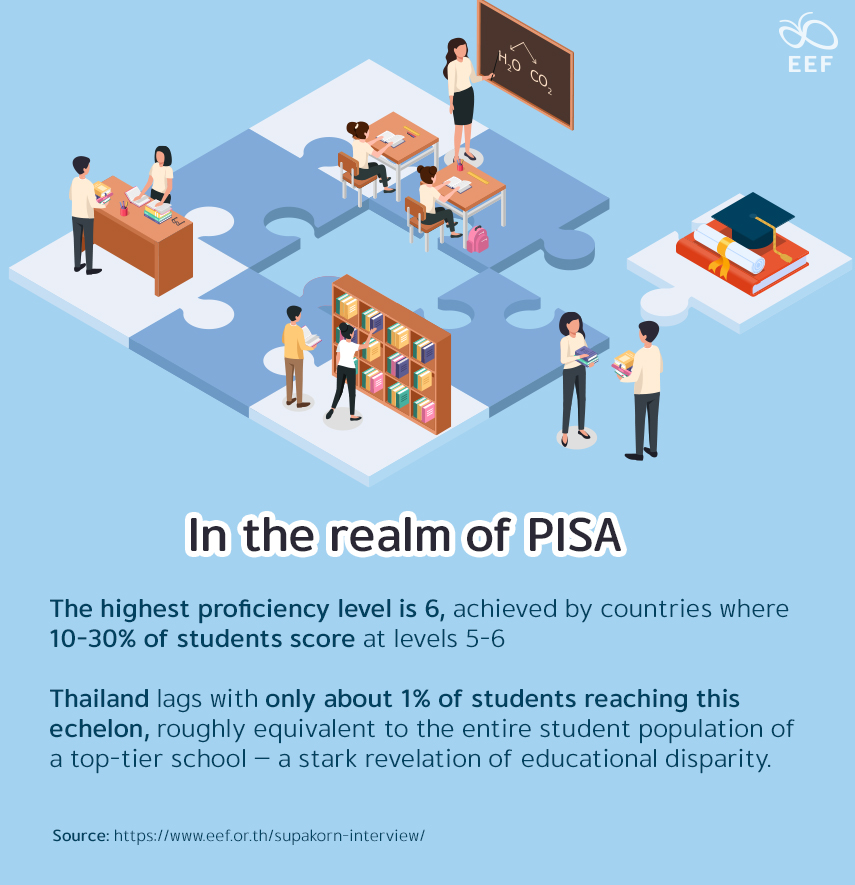
In the realm of PISA, the highest proficiency level is 6, achieved by countries where 10-30% of students score at levels 5-6; Thailand lags with only about 1% of students reaching this echelon, roughly equivalent to the entire student population of a top-tier school —a stark revelation of educational disparity.
In essence, the pursuit of a robust education system necessitates a holistic approach, engaging all strata of society and upending entrenched beliefs. It is a call to reimagine education not merely as a conduit for knowledge acquisition but as a vehicle for societal advancement. Only through such visionary reformation can Thailand transcend its barriers and realize its true potential for equitable education. In response to this, the EEF has developed the Information System for Equitable Education (iSEE), a comprehensive database covering disadvantaged children and youth. Integrated with data from six ministries and Geographic Information System (GIS), iSEE accurately identifies at-risk children prone to dropping out. Leveraging this invaluable data, the EEF initiates pioneering projects to tackle educational disparities head-on.
In the quest for a robust education system, a holistic approach is paramount, challenging ingrained beliefs and rallying all segments of society —a call to preconceive education not just as a means of acquiring knowledge but as a catalyst for societal progress, a visionary reform essential for Thailand to overcome its barriers and achieve equitable education. Answering this call to action, the EEF has unveiled the groundbreaking Information System for Equitable Education (iSEE). Integrating data from six ministries and the Geographic Information System (GIS), iSEE precisely pinpoints economically disadvantaged children and youth at risk of dropping out, empowering the EEF to launch innovative projects that directly confront educational disparities.
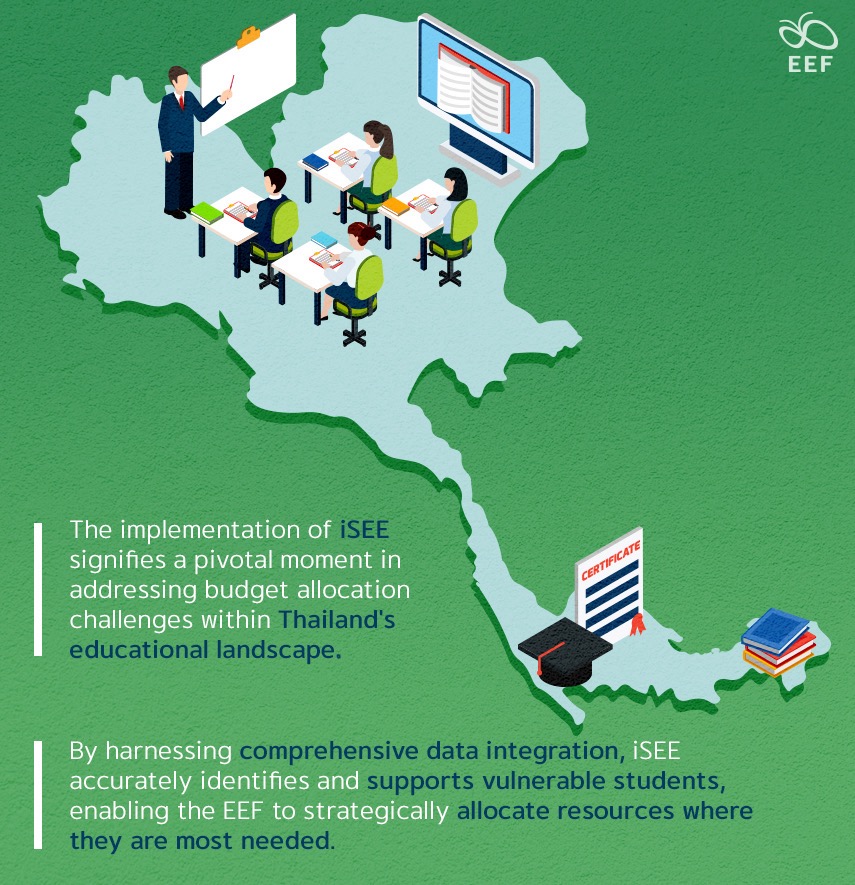
The implementation of iSEE signifies a pivotal moment in addressing budget allocation challenges within Thailand’s educational landscape. By harnessing comprehensive data integration, iSEE accurately identifies and supports vulnerable students, enabling the EEF to strategically allocate resources where they are most needed. This precise targeting ensures that budget allocations are directed towards bridging educational disparities rather than being dispersed generically. Armed with iSEE’s insights, the EEF can prioritize demand-side financing tailored to students’ needs, ushering in systemic change and reshaping the educational paradigm. Furthermore, iSEE streamlines program management, facilitating seamless monitoring and distribution of aid, thus ensuring accountability and minimizing errors.
The significance of iSEE extends beyond budget optimization; it also sets a precedent for private sector involvement through innovative financial models. Private sectors are urged not only to provide financial backing but also to actively participate in project oversight, fostering shared responsibility and driving tangible, sustainable changes. Recognizing a diverse array of potential funders is crucial for maximizing funding opportunities, while transparent communication of project outcomes is essential for maintaining ongoing support. Organizations must adapt strategies to install confidence, develop aligned financial models, and efficiently reduce educational disparities.
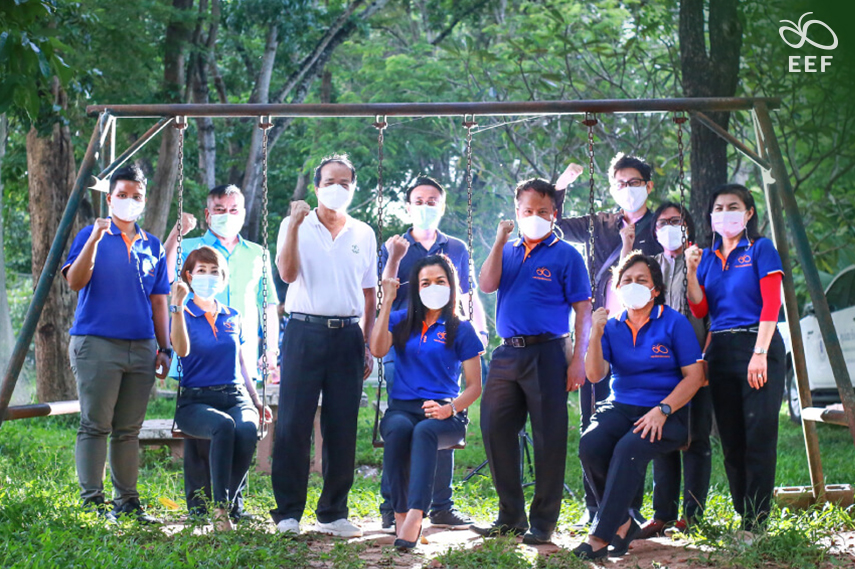
Central to this transformational endeavor is the concept of innovative financing, a pivotal tool in safeguarding underprivileged and marginalized children and youth against future challenges. The Equitable Education Fund’s steadfast commitment to narrowing educational disparities positions it as the country’s leader in advancing educational equity. Collaborations underscore corporate contributions to educational initiatives, showcasing the EEF’s proactive stance and successful endeavors. Together, these efforts underscore the potential of iSEE to drive sustainable impact, addressing financial obstacles and promoting educational equity and opportunities for all children and youth nationwide, in alignment with the All for Education strategy.

